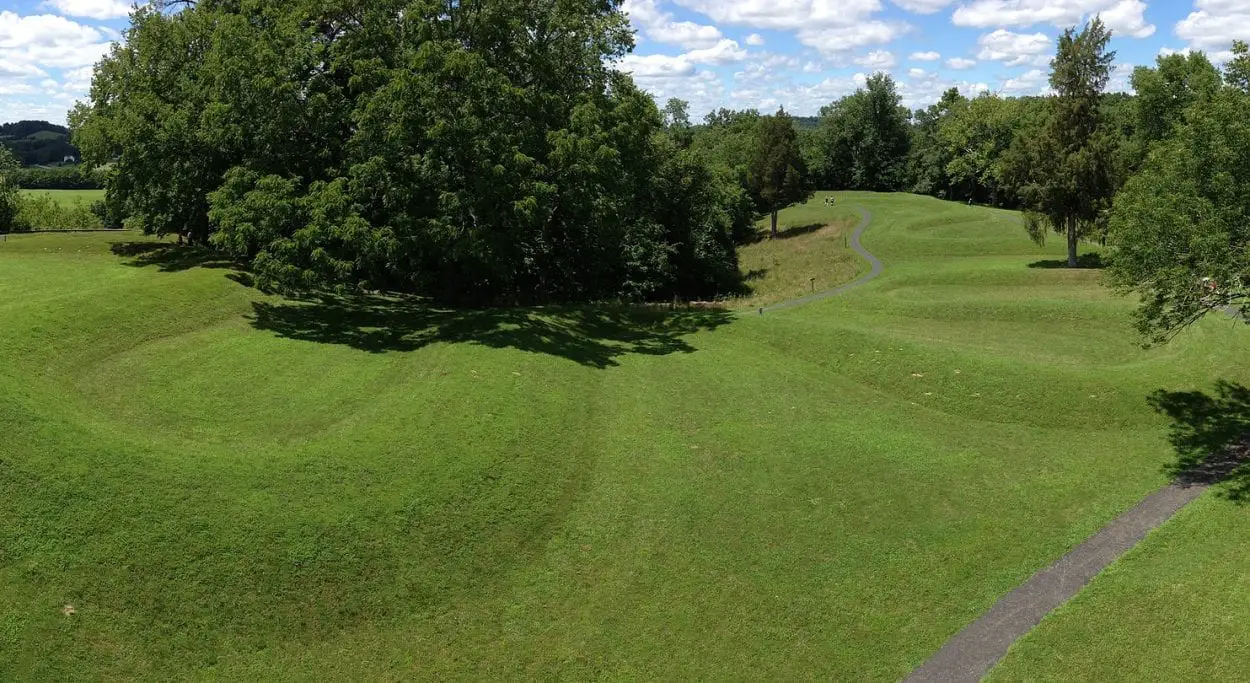The Great Serpent Mound is a large mound effigy representing a snake with a curled tail, that was constructed on the site of a classic astrobleme formed from the impact crater of an eroded meteorite that impacted less than 320 million years in the state of Ohio in the United States.
The mound was first recorded during surveys by Ephraim Squier and Edwin Davis in their historic volume Ancient Monuments of the Mississippi Valley, published in 1848 by the newly founded Smithsonian Museum.
Historically, the mound was attributed to the Adena culture (1000 BC – 100 AD), with construction suggested between 381 BC and 44 BC based on Adena Gorgets and points excavated from the mound, but more recent studies from 1996 propose the Fort Ancient Culture (1000 to 1750 AD), with a construction date of AD 1070.
The latter theory builds on carbon dating studies of several charcoal remains discovered in situ, although bioturbation can shift carbon samples left by a later culture on the surface to areas deep within the structure, making the earthwork appear younger.
Another theory conjectures that the Fort Ancient Culture may have restored the monument after a period of natural degradation, in which the date of construction would have predated the Fort Ancient Culture period and point again to the Adena Culture period.
The mound stretches for 1348 feet in length, and ranges from 3.9 to 4.9 feet in height, and 19.7 to 24.9 feet in width. Archaeologists disagree about what the head of the mound represents, with some suggesting that the oval shape signifies an enlarged eye, whilst another theory suggests a hollow egg, possibly being swallowed by open jaws.
Based on research by Robert V. Fletcher and Terry L. Cameron, it is proposed that the head of the serpent is aligned to the summer solstice sunset, and the coils may also point to the winter solstice sunrise and the equinox sunrise.
If the Fort Ancient Culture construction date of AD 1070 is also correct, then the mound may have been influenced by two astronomical events: the supernova from the Crab Nebula in AD 1054, and the appearance of Halley’s Comet in AD 1066.
Serpent Mound State Memorial is currently being operated on behalf of the Ohio Historical Society by the Arc of Appalachia Preserve System.
Header Image Credit : Eric Ewing – CC BY-SA 3.0
